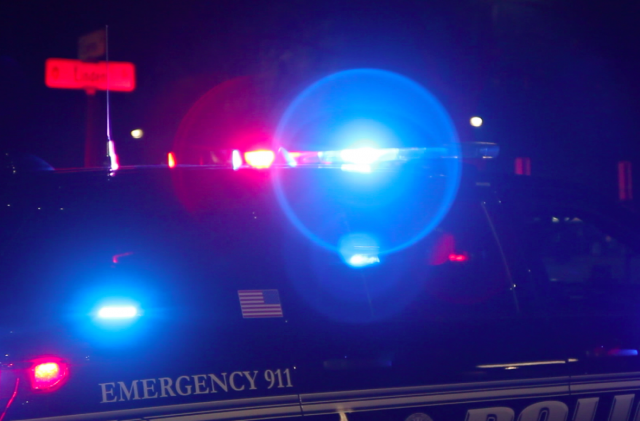






 (Melissa Behling/Madison Commons)
(Melissa Behling/Madison Commons)
This story is the second in a two-part series looking closely at the debate surrounding body camera use in the Madison Police Department, as well as the larger issues of systemic bias and community involvement. Part 1 focused on the debate surrounding body worn cameras.
Last month, community members asked the police to find a better way to spend money than on body worn video cameras. They asked for money that would be spent on outfitting officers with cameras and on digital storage space to instead go towards building up communities of color.
Matthew Braunginn is the co-founder of the Young Gifted and Black Coalition, a group dedicated to ending state violence against low-income communities of color. He said cameras aren’t the solution.
“We’re going to be spending millions of dollars nationwide in giving police another tool in their large and ever-growing tool bag that we keep spending money on instead of addressing the root causes of crime and poverty,” Braunginn said.
The Madison Police Department has been working to mend relations with the community for several years now. It has several programs encapsulated in its Community Outreach department, under the leadership of Captain Kristen Roman.
These include programs like Amigos en Azul, where police officers work to dissolve cultural barriers and open lines of communication with the Latino community. Another is the mental health liaison program to help divert individuals with mental illnesses from the prison system and to connect these individuals with mental health resources.
The Madison Police Department also received a federal grant from the U.S. Department of Justice to establish a Community Outreach and Resource Education team. The team will be formed in June 2016, with one sergeant and two officers hired onto the team immediately after graduating from the Academy. MPD also applied and received a second grant to add three more officers to the team in June 2017.
“This team was born out of wanting to reduce some of the disparities in terms of the disparate impact on communities of color,” Capt. Roman said. “We are looking to improve legitimacy in communities of color, improve trust and perceptions of fairness and procedural and restorative justice initiatives.”
But these programs have some unintentional drawbacks.
Issues with community policing
Braunginn says Madison Police Chief Mike Koval takes pride in community policing, but community members see this as over-policing black neighborhoods.
“They have these officers involved and active in talking to the black community, but you don’t see this in white communities,” Braunginn said. “It’s what you’d call a ‘velvet’ glove way to police, instead of a baton. It’s a less aggressive looking way to over-police neighborhoods.”
Braunginn said the federal government developed community policing in the 1970s to suppress social uprisings before they occurred.
“Even in this so-called ‘velvet glove’ way, it’s just another form of social control targeted at the black community to have better eyes and ears on what’s going on and not to have such a brute way to squash social uprisings,” he said. “But the goal is still the same.”
In addition to distrust generated from over-policing in black neighborhoods, the racial disparities in incarceration rates indicate deeper systemic problems. African Americans make up 4.8 percent of the population in Dane County but account for 43 percent of its jail system.
Programs intended to decrease this arrest disparity, like implicit bias training, have been found to be largely ineffective, nationwide.
Leland Pan, Dane County Board supervisor for District 5, said the officer involved homicides of Paul Heenan in Nov. 2012 and Tony Robinson in March 2015 was a wake-up call for Madisonians.
“Madison sees itself as a very progressive city where, theoretically our police force is one that is less forceful or perhaps less punitive than other police forces,” Pan said. “We have this idea of our police force, and you can certainly make an argument that to a certain degree that is probably true compared to other police departments.”
Pan said the shooting of Paul Heenan and Tony Robinson meant that the “self-image might be a myth.”
“We have the same issues here that we have everywhere when it comes to police brutality and racial disparities. These are bigger issues than just the culture of our city or the political views of our community,” he said. “This is a systemic issue that this city faces alongside the rest of the country.”
What can be done?
With these officer-involved homicides fresh in the community’s mind, this distrust is a large and complicated issue to address – especially when neither officer was charged.
But community leaders, like Braunginn, have offered solutions to solving the bitter feelings.
“What Young, Gifted and Black has been calling for is community control over the police,” he said.
Braunginn said this would look like a non-elected, rotating community board consisting of people who are most affected by police practices who would decide what policing would look like in their individual neighborhood.
“That doesn’t really fix the problems of trust, but it fixes the power and that is really the biggest problem,” he said.
Braunginn then quoted Stokely Carmichael, the “Honorary Prime Minister” of the Black Panther Party: “If a white man wants to lynch me, that’s his problem. If he’s got the power to lynch me, that’s my problem. Racism is not a question of attitude; it’s a question of power.”
|
|
|
Welcome to the Madison Commons, a website designed to provide news and information about all of Madison's neighborhoods and a crossroads for the discussion of community issues. The name comes from the idea of a village commons, a place for news, talk, debate, and some entertainment, too, that's open to everyone.
All rights reserved. Read more about the Madison Commons and its partners.

